Editor's note: Remarkable achievements have been made in the past five years, as Beijing sped up the efforts to strengthen its role as the center for international exchanges. Beijing has planned and built a number of major landmark projects such as the Yanqi Lake International Conference Center, China National Convention Center Phase II (CNCC-II), and the fourth embassy district. It successfully hosted more than ten major diplomatic events including two editions of the Belt and Road Forum for International Cooperation, and major international sports events such as the Beijing 2022 Winter Olympics and Paralympics. The city is now better prepared and more capable to serve China's overall diplomatic goals and tasks. Beijing has made continuous efforts to improve the international business environment, working environment and living environment. As a result, the city has become more attractive to foreign-funded enterprises, international organizations, and international talent, and has enhanced its position and role among cities around the world.
On the occasion of the upcoming 13th Beijing Municipal Congress of the Communist Party of China, Beijing Foreign Affairs Office launches this column entitled "Five Years of Improving Beijing's Role as the International Exchange Center", which is a collection of the local media's reporting on the city's new progress and achievements in improving its role as the center for international exchanges, and aims to serve as a review of the efforts and unforgettable moments in the past five years.
Beijing Daily
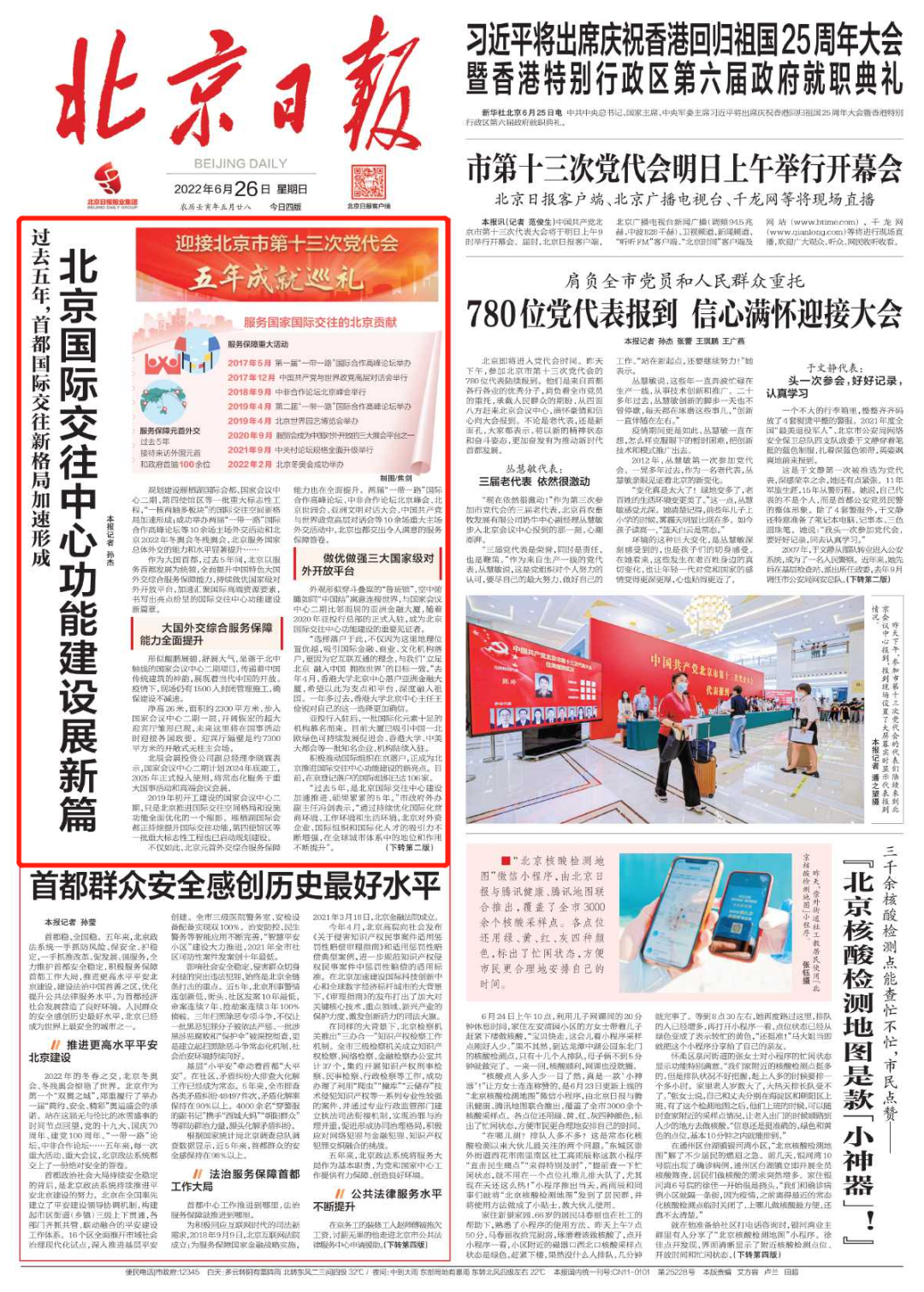
Beijing has planned and built a number of major landmark projects such as the Yanqi Lake International Conference Center, CNCC-II, and the fourth embassy district. A new development structure for international exchanges underpinned by "one core, two axes, and multiple sections" is taking shape. It successfully hosted more than ten major diplomatic events including two editions of the Belt and Road Forum for International Cooperation, and the Beijing 2022 Winter Olympics and Paralympics. The city is now better prepared and more capable to serve China's overall diplomatic goals and tasks.
Fulfilling its role as a major country's capital, over the past five years, Beijing has been working to deliver quality service to China's major-country diplomacy, improve national-level platforms for opening-up, and gather high-end international resources at an accelerated pace. Fruitful gains were made in the building of the international exchange center.
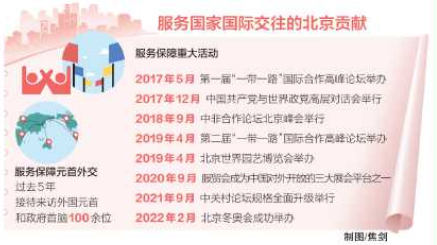
Beijing contributes to the country's international exchanges
Deliver quality service to China's major-country diplomacy
Like Kunpeng—a gigantic bird—spreading its wings, CNCC-II, located on the northern end of the central axis, exhibits the beauty of traditional Chinese architecture and demonstrates the openness of contemporary China. Despite the epidemic, 1,500 people are still working on the construction site under closed-loop management to ensure steady progress.
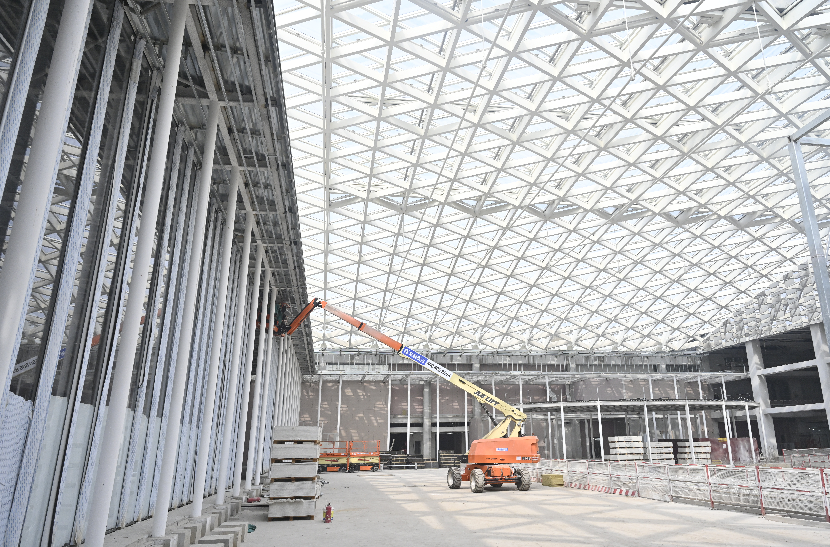
Interior view of CNCC-II
Located on the first floor of CNCC-II and with a height of 26 meters and an area of about 2,300 square meters, the grand reception hall, where national events will be held and foreign leaders will be hosted, has taken shape. Next to the reception hall is a pillar-free plenary hall of about 7,300 square meters.
Li Xiaolin, deputy general manager of North Star Exhibition Investment Co., Ltd., said that CNCC-II is scheduled to be completed by the end of 2024 and officially put into use in 2025. Upon completion, it will regularly host major national events and high-end conferences and exhibitions.
CNCC-II, the construction of which began in early 2019, epitomizes Beijing's efforts to improve the spatial layout and facilities for international exchanges. Yanqi Lake International Conference Resort is continuously enhancing its functions to support international exchanges, and the planning and construction of a number of major landmark projects such as the fourth embassy district have also started.
Moreover, Beijing's service capacity for head-of-state diplomacy has also increased. Beijing delivered quality services for more than ten major diplomatic events, including two editions of the Belt and Road Forum for International Cooperation, the Beijing Summit of the Forum on China-Africa Cooperation, the Beijing International Horticultural Exposition, the Conference on Dialogue of Asian Civilizations, and the CPC in Dialogue with World Political Parties High-Level Meeting.
Improve the three national-level platforms for opening-up
Taking the shape of a Luban Lock, the Asia Financial Center, which is adjacent to CNCC-II, resembles a Chinese knot from a bird's eye view, implying China's connection to the world. Hosting the headquarters of the Asian Infrastructure Investment Bank (AIIB) since 2020, the building witnessed how Beijing improved its role as the center for international exchanges.
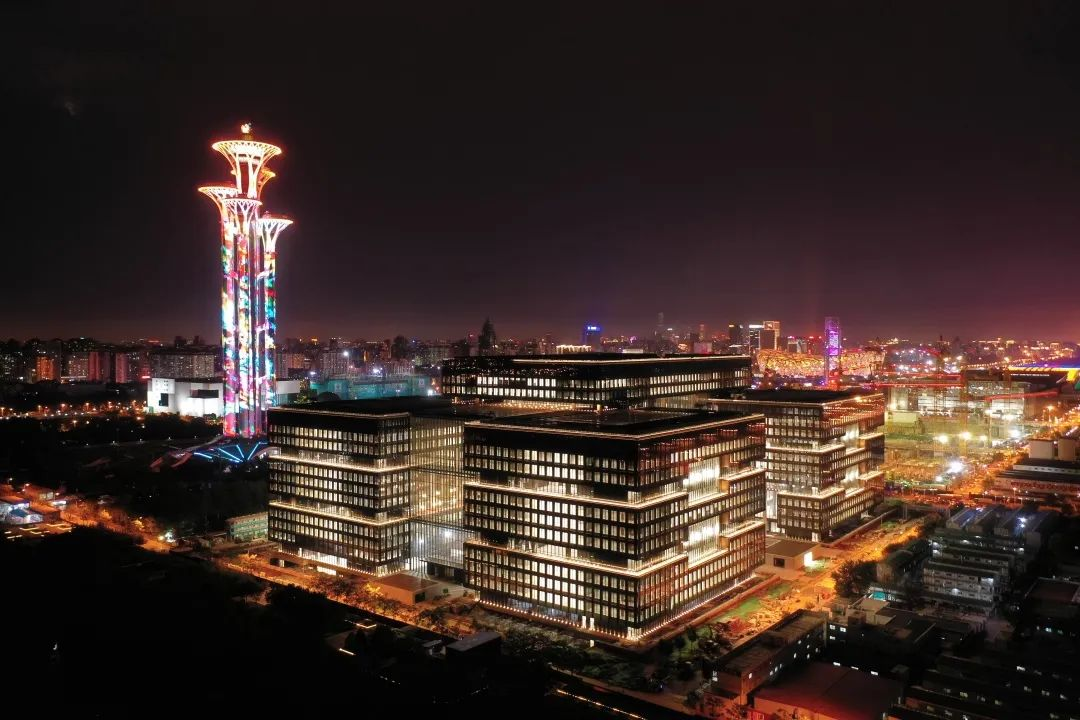
Asia Financial Center
"We chose to settle in the Asia Financial Center not only for its superior geographical location, which is very appealing to international financial, commercial and cultural institutions, but also for the philosophy of interconnectivity that the building embodies, which is consistent with our goal of integrating into the mainland and embracing the world." In April last year, the University of Hong Kong settled its Beijing Center in the Asia Financial Center, hoping to use it as an opportunity and a platform to deeply integrate into the mainland. More than a year on, Wang Jianrui, director of the HKU Beijing Center, has become more convinced of this choice.
After the AIIB settled in the building, a number of international institutions followed suit, including the Sino-Nordic Promotion Association for Green Sustainable Development (SNPA), the University of Hong Kong, and Sino-US United MetLife Insurance Company Limited.
Currently, 106 international organizations have registered and settled in Beijing, a highlight in Beijing's effort to enhance its function as the international exchange center.
"Substantial results were achieved in the past five years, as Beijing sped up the efforts to strengthen its role as the center for international exchanges," said Feng Jian, Deputy Director General of Beijing Foreign Affairs Office. "By continuously improving the international business environment, working environment and living environment, Beijing has become more attractive to foreign-funded enterprises, international organizations, and international talent, and has enhanced its position and role among cities in the world."
The China International Fair for Trade in Service (CIFTIS) has been upgraded to a state-level, international, and comprehensive exhibition of trade in services; the Zhongguancun Forum has been upgraded to an exchange and cooperation platform for international scientific and technological innovation that integrates scientific and technological exchange with the exhibition, release, and trading of innovation achievements; the Financial Street Forum is known as a barometer of China's financial reform and development.... In the past five years, Beijing has been improving and strengthening the three national-level platforms for opening-up by making them more international, professional, and market-oriented and expanding their global outreach.
High-end resources of international industrial cooperation are gathering at an accelerated pace
China-Germany Industrial Park, which is located in Beijing's Shunyi District and only three kilometers away from the Beijing Capital International Airport, officially opened in December last year. As the first national-level industrial park focusing on economic and technological cooperation between China and Germany, it represents the latest step of Beijing to gather high-end resources for international industrial cooperation.
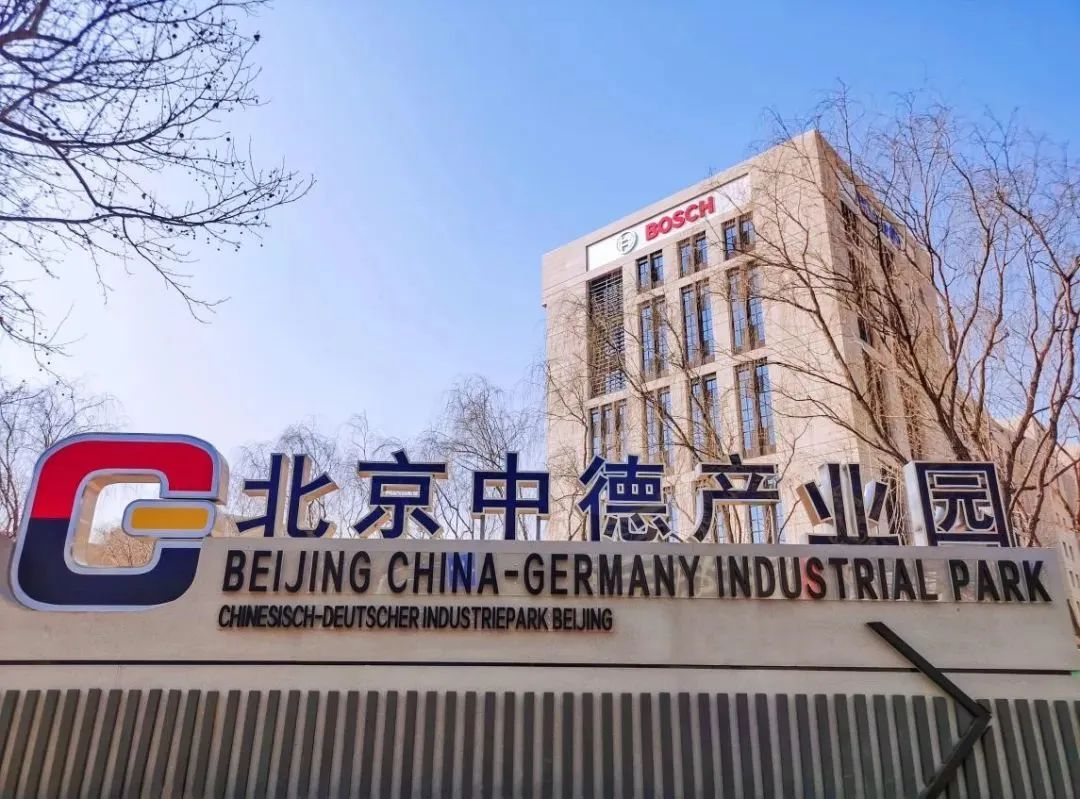
China-Germany Industrial Park
"By fully leveraging the 'two zones' policies, we will carry out country specific explorations for opening-up in key industrial parks, and create new clusters of international industrial cooperation," a person in charge of Shunyi District said. At present, the Park has gathered 73 German-funded enterprises, including Mercedes-Benz, Ameco, and Wilo, among which, 25 are hidden champions. In 2021, the Park generated a total industrial output of nearly 30 billion yuan and attracted 120 million US dollars of new investment. There are more than 100 German senior management personnel and engineers working in the Park. The agglomeration of high-end resources for international cooperation is gaining momentum.
In the same vein, the Beijing China-Japan Innovation & Cooperation Demonstration Zone has been approved for establishment in Daxing District in the southern part of the city. With a focus on healthcare, advanced manufacturing and digital economy, the Park is now home to 45 foreign-invested enterprises and 63 projects in high-end , precision and sophisticated industries.
(Reporter: Sun Jie)
(Photo sources: Beijing Foreign Affairs Office, Beijing Daily, Beijing Investment Group, China-Germany Industrial Park)


